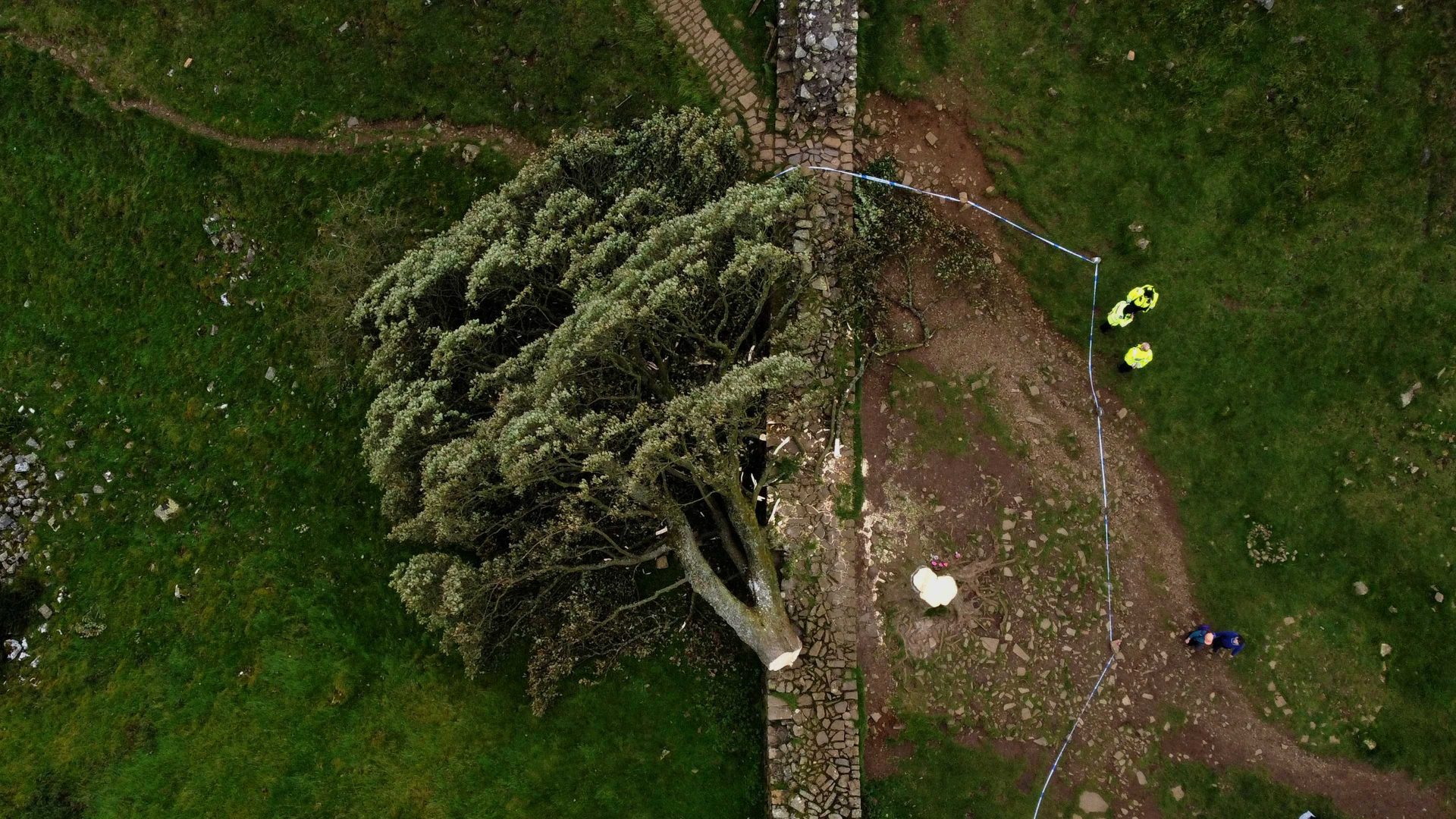In 1879 Gerard Manley Hopkins wrote Binsey Poplars, lamenting the felling of beautiful trees that grew along the Thames just outside Oxford:
When we hew or delve:
After-comers cannot guess the beauty been.
Ten or twelve, only ten or twelve
Strokes of havoc unselve
The sweet especial scene
Without that poem, those poplars’ fate would have been quickly forgotten. Hopkins’s work, which seems particularly poignant after the felling of the Sycamore Gap tree near Crag Lough in Northumberland, captured his sense of outrage, loss, and sacrilege at their destruction. Perhaps there is a photograph of those poplars somewhere, but we “after-comers” get the best sense of “the beauty been” from his elegy.
There is a very long tradition of cherishing and even worshipping special trees. The classicist Armand D’Angour has described how the ancients revered sacred woods, and reserved particularly gruesome punishments for those who destroyed them.
The Roman poet Ovid wrote of the fate of the King of Thessaly, who felled the sacred grove of Demeter with an axe when his servants refused to do it. As the dryad (a tree spirit) that dwelt there was fading away, in her last breath she put a curse on him: his punishment was to have an insatiable hunger.
The king sells everything, including his daughter, to buy food, but that is not enough. Eventually he resorts to eating his own living flesh. It doesn’t end well for him.
Reactions to the destruction of the much-loved 300-year-old sycamore on Hadrian’s Wall have combined something of Hopkins’s grief at the loss of the “especial scene” with a thirst for dryad-like revenge on the perpetrator whose chainsaw deprived us of one of Britain’s favourite trees. Now there is just a stump and a gap, and a deep sense of absence.
But what is a gap? When the twin towers fell, and the spire of Notre-Dame was destroyed by fire, what was left? Literally nothing. A space where something valued had been, like the gap left when someone dies, except more specific because tied to place – more like the empty chair in which the lost loved one used to sit.
From a metaphysical point of view, though, if you believe that everything that exists is material, gaps aren’t straightforward. They are a little mysterious. Philosophers have written entire books on the topic of nothing. We talk easily enough of holes and gaps, but what are they? They’re not made of anything. They are literally made of nothing and seem to come into existence and disappear in strange ways.
Take the hole at the centre of a doughnut. If you carefully eat all the dough from around it, does the hole at a certain point vanish, or does it continue to exist in some no longer perceptible form? At what point does it cease to be a hole? After the first bite? If you think a hole or a gap is defined by the material thing that exists around it or at its edge, how deep does this material surrounding have to be? A millimetre, a molecule?
Psychologically, though, there is no doubt that absences felt in particular places matter to us. The gap left on Hadrian’s Wall will be felt by anyone who had previously visited that place or has seen photographs of the remarkable tree in situ.
The existentialist Jean-Paul Sartre wrote about going to a cafe to meet his friend Pierre, and not finding him there. Because of his thwarted expectation of seeing him, every aspect of the cafe was haunted by his non-presence. Until some kind of replacement tree or sculpture takes the original sycamore’s place, and probably long after, the sycamore’s non-presence will be felt. Anyone visiting will be as haunted by its absence as Sartre was by Pierre’s absence in the cafe.
(I can’t resist mentioning that Sartre’s discussion of how absence is perceived is the pretext for one of philosophy’s better jokes. Sartre goes back to the cafe where he couldn’t find Pierre and asks the waiter for a coffee without cream. The waiter apologises because they don’t have any cream in the kitchen. He asks Sartre if he’d like one without milk instead).
We usually think of perception as seeing what is in front of us. But that’s misleading.
Those who are turning up in their hundreds to visit the site of the sycamore stump are like the crowds who queued to see the space where the Mona Lisa used to hang after it was stolen from the Louvre in 1911. They are coming to see an absence, literally nothing. But an absence that matters.



